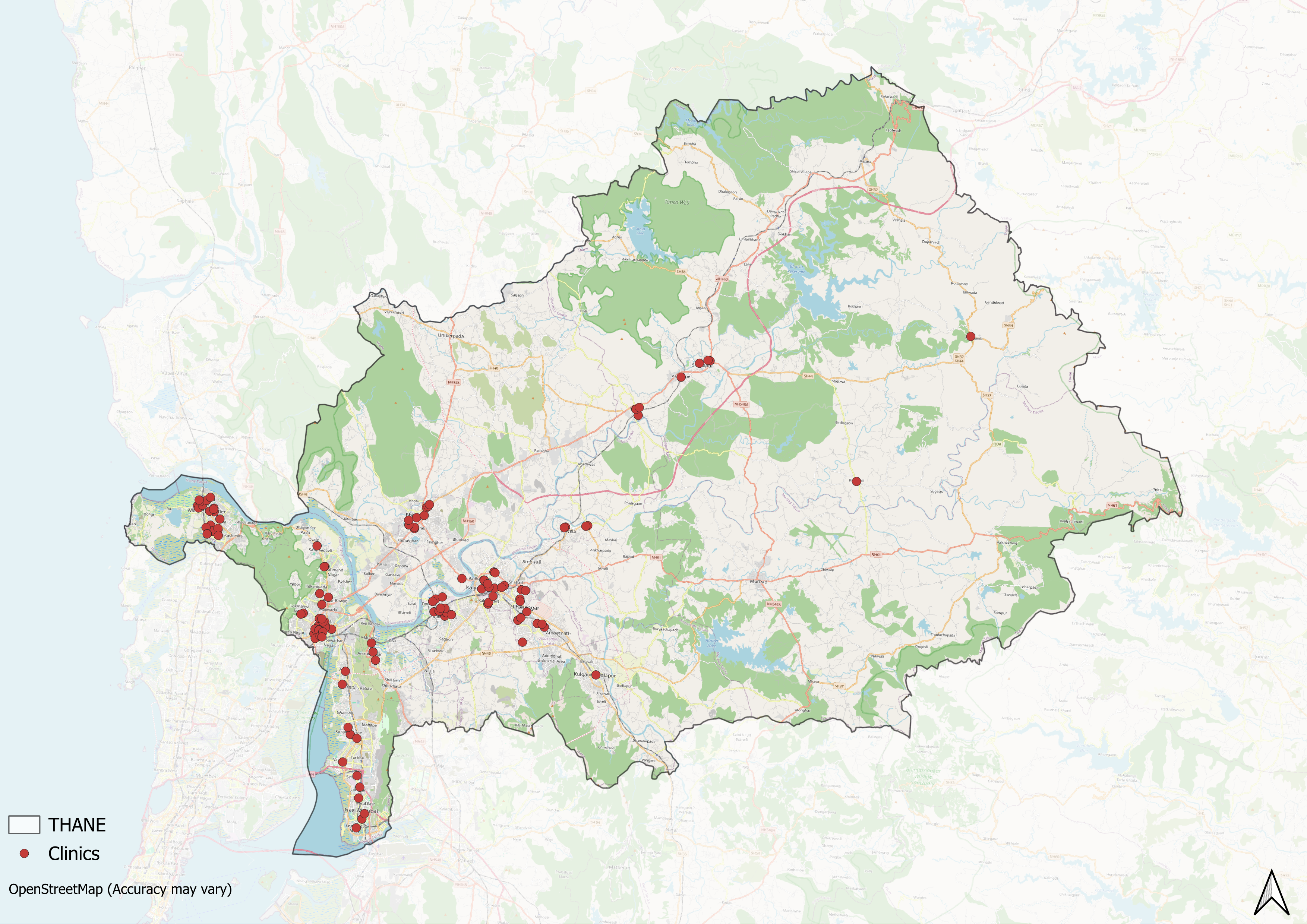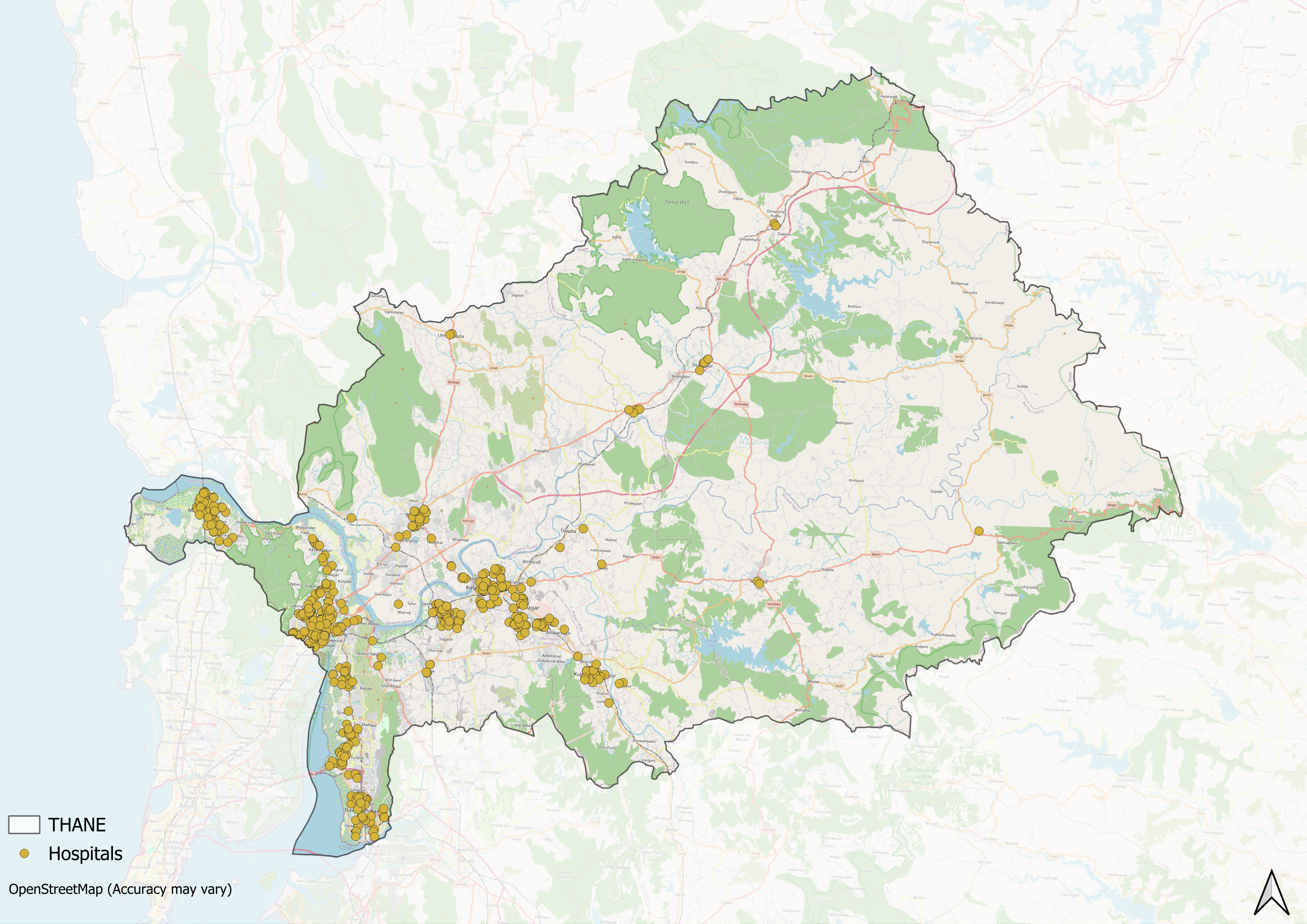Contents
- Healthcare Infrastructure
- Three Tiered Structure in the District
- Age-Old Practices & Remedies
- Tabashir
- Yeoor Hills
- Graphs
- Healthcare Facilities and Services
- A. Public and Govt-Aided Medical Facilities
- B. Private Healthcare Facilities
- C. Approved vs Working Anganwadi
- D. Anganwadi Building Types
- E. Anganwadi Workers
- F. Patients in In-Patients Department
- G. Patients in Outpatients Department
- H. Outpatient-to-Inpatient Ratio
- I. Patients Treated in Public Facilities
- J. Operations Conducted
- K. Hysterectomies Performed
- L. Share of Households with Access to Health Amenities
- Morbidity and Mortality
- A. Reported Deaths
- B. Cause of Death
- C. Reported Child and Infant Deaths
- D. Reported Infant Deaths
- E. Select Causes of Infant Death
- F. Number of Children Diseased
- G. Population with High Blood Sugar
- H. Population with Very High Blood Sugar
- I. Population with Mildly Elevated Blood Pressure
- J. Population with Moderately or Severely High Hypertension
- K. Women Examined for Cancer
- L. Alcohol and Tobacco Consumption
- Maternal and Newborn Health
- A. Reported Deliveries
- B. Institutional Births: Public vs Private
- C. Home Births: Skilled vs Non-Skilled Attendants
- D. Live Birth Rate
- E. Still Birth Rate
- F. Maternal Deaths
- G. Registered Births
- H. C-section Deliveries: Public vs Private
- I. Institutional Deliveries through C-Section
- J. Deliveries through C-Section: Public vs Private Facilities
- K. Reported Abortions
- L. Medical Terminations of Pregnancy: Public vs Private
- M. MTPs in Public Institutions before and after 12 Weeks
- N. Average Out of Pocket Expenditure per Delivery in Public Health Facilities
- O. Registrations for Antenatal Care
- P. Antenatal Care Registrations Done in First Trimester
- Q. Iron Folic Acid Consumption Among Pregnant Women
- R. Access to Postnatal Care from Health Personnel Within 2 Days of Delivery
- S. Children Breastfed within One Hour of Birth
- T. Children (6-23 months) Receiving an Adequate Diet
- U. Sex Ratio at Birth
- V. Births Registered with Civil Authority
- W. Institutional Deliveries through C-section
- X. C-section Deliveries: Public vs Private
- Family Planning
- A. Population Using Family Planning Methods
- B. Usage Rate of Select Family Planning Methods
- C. Sterilizations Conducted (Public vs Private Facilities)
- D. Vasectomies
- E. Tubectomies
- F. Contraceptives Distributed
- G. IUD Insertions: Public vs Private
- H. Female Sterilization Rate
- I. Women’s Unmet Need for Family Planning
- J. Fertile Couples in Family Welfare Programs
- K. Family Welfare Centers
- L. Progress of Family Welfare Programs
- Immunization
- A. Vaccinations under the Maternal and Childcare Program
- B. Infants Given the Oral Polio Vaccine
- C. Infants Given the Bacillus Calmette Guerin (BCG) Vaccine
- D. Infants Given Hepatitis Vaccine (Birth Dose)
- E. Infants Given the Pentavalent Vaccines
- F. Infants Given the Measles or Measles Rubella Vaccines
- G. Infants Given the Rotavirus Vaccines
- H. Fully Immunized Children
- I. Adverse Effects of Immunization
- J. Percentage of Children Fully Immunized
- K. Vaccination Rate (Children Aged 12 to 23 months)
- L. Children Primarily Vaccinated in (Public vs Private Health Facilities)
- Nutrition
- A. Children with Nutritional Deficits or Excess
- B. Population Overweight or Obese
- C. Population with Low BMI
- D. Prevalence of Anaemia
- E. Moderately Anaemic Women
- F. Women with Severe Anaemia being Treated at an Institution
- G. Malnourishment Among Infants in Anganwadis
- Sources
THANE
Health
Last updated on 6 November 2025. Help us improve the information on this page by clicking on suggest edits or writing to us.
Thane’s healthcare landscape, like many other regions across India, is shaped by a blend of indigenous and Western medical practices. For centuries, local communities have relied on traditional healers and indigenous knowledge to address health needs, drawing heavily on the district’s rich natural resources such as the forests of Yeoor. Notably, Thane’s medical heritage holds a significant connection to the historic trade of tabashir (Tvaksheera), a prized bamboo extract once exported by Arab traders and referenced in ancient medical texts for its wide use in Ayurveda and Unani systems.
Much of Thane’s formal healthcare infrastructure began to take shape under colonial rule, marked by early institutions such as the Thana Civil Hospital, established in 1836, and the Rustomji Wadia Clinic, which opened in 1865 to address widespread health issues of the time. The district’s history also includes significant contributions to mental health care, with the establishment of the Regional Mental Hospital in 1901, one of the oldest mental health institutions in Maharashtra. Over the years, the region has witnessed several significant developments in healthcare delivery.
Healthcare Infrastructure
Similar to other regions in India, Thane’s healthcare infrastructure follows a multi-tiered system that involves both public and private sectors. The public healthcare system is structured into primary, secondary, and tertiary levels. Primary care is provided through Sub Centres and Primary Health Centres (PHCs), secondary care is managed by Community Health Centres (CHCs), and Sub-District hospitals, while tertiary care, the highest level, is delivered through Medical Colleges and District Hospitals.


Supporting this structure is a network of Accredited Social Health Activists (ASHAs) who, as described by the National Health Mission, serve as “an interface between the community and the public health system.” Over time, this multi-layered healthcare model has been continuously shaped and refined by national healthcare policies and reforms to improve universal health coverage across regions.
Three Tiered Structure in the District
The district’s formal healthcare network can be traced back to the colonial period. One of the earliest recorded facilities was the Thane Civil Hospital, which opened its doors in 1836 to provide organised medical care to a growing settlement. By the mid-19th century, further steps were taken to address common diseases of the region when the Rustomji Wadia Clinic began operating in 1865. This clinic focused on ailments such as malaria, respiratory infections, and intestinal complaints, which were widespread at the time.
Philanthropic support played an important role in expanding local healthcare. The Rukmanibai Dispensary at Kalyan was founded through the efforts of Sir Mangaldas Nathubhai, a notable local benefactor. It formed part of a network of twelve other dispensaries that gradually came up across the district. These early centres were maintained through a mix of local donations, private endowments, and government grants, reflecting how community contributions complemented the limited colonial framework.
![Thane Civil Hospital, Thane City[1]](/media/statistic/images/maharashtra/thane/health/thane-civil-hospital-thane-city1-c056adb1.png)
Thane District holds a very significant place in the state’s mental health landscape. The Regional Mental Hospital, established in 1901, was one of the few facilities in Maharashtra dedicated entirely to mental healthcare when it opened. Spread over seventy-two acres, it continues to serve patients from within and beyond the district. Over the decades, reports have pointed to challenges related to infrastructure and patient care, shaped in part by the enduring stigma surrounding mental illness.
![Thane Mental Hospital[2]](/media/statistic/images/maharashtra/thane/health/thane-mental-hospital2-a2d79d2b.png)
In recent decades, Thane has seen steady growth in its network of private hospitals and specialist clinics. Urban areas within the district have become important centres for both general and specialised care. Among them, Thane Health Care Hospital, which began operations twenty-one years ago through the initiative of local doctors, follows an approach that places emphasis on treating patients holistically.
Jupiter Hospital, established in 2007, is a tertiary and quaternary care facility and houses what is described as Asia’s largest neuro-rehabilitation centre.
![Jupiter Hospital[3]](/media/statistic/images/maharashtra/thane/health/jupiter-hospital3-1e5cdaf4.png)
Vedant Kalyan Hospital, one of the major private hospitals in Kalyan, offers a wide range of multi-specialty services and caters to patients from nearby towns as well.
Alongside larger hospitals, the district is home to numerous smaller clinics covering areas such as dental care, eye treatment, and dermatology. Many of these clinics are equipped with diagnostic facilities for blood tests, X-rays, and other routine procedures, making basic healthcare more accessible to local communities.
However, similar to patterns seen in other parts of India, Thane’s healthcare facilities are distributed unevenly across the district. While towns such as Thane, Ulhasnagar, Vashi, and Kalyan have a good spread of hospitals and clinics, locals remark on how regions like Bhiwandi continue to experience gaps in access, pointing to the ongoing need to strengthen services across all parts of the district.
Age-Old Practices & Remedies
Historically, before the advent of Western health care systems or the three-tiered healthcare infrastructure that exists today, people in the district relied on and made use of indigenous knowledge and medicine for their well-being. When it comes to healthcare, India, for long, has been characterized by a pluralistic health tradition. Among the many medicine systems that have a long history in India and in Thane, as locals say, are Ayurveda, Unani, and local knowledge systems.
Tabashir
In the field of medicine, Thane holds a distinct place as a source of tabashir, a translucent substance collected from the inner joints of certain bamboo species. Once traded widely by Arab merchants, tabashir reached distant markets across Asia and beyond, and was noted by Pedanius Dioscorides, the Greek pharmacologist practising in Rome during the 1st century CE. It continued to draw scholarly attention centuries later, appearing in A Dictionary of Economic Products of India (1885) by Edgar Thurston and George Watt.
Reports indicate that tabashir remains a valued ingredient in traditional Ayurvedic and Unani medicine. The Bombay Gazetteer (1882) records that it is derived from the inner rind of bamboo, while Thurston and Watt described its reputed qualities as an antipyretic, antispasmodic, and restorative substance. In Sanskrit, it is referred to as Tvaksheera (त्वक्षीर), meaning “bark milk,” and is also known by names such as bamboo sugar (vans-sharkar) and bamboo camphor (vans karpoor), each highlighting aspects of this unusual material.
Yeoor Hills
The Yeoor Hills, which form part of the Sanjay Gandhi National Park’s forested expanse, are home to indigenous communities such as the Warli, Kokna, and Katkari, who are well regarded for their deep knowledge of local plants and their uses in everyday health. Among the species commonly gathered in these forests, the Bidi leaf tree (Bauhinia racemosa) is valued for its application in treating skin conditions and digestive troubles. The Semal tree (Bombax ceiba) is used to help heal wounds and ease respiratory ailments, while the bright Palash flowers (Butea monosperma) are known for their cleansing qualities and are often prepared as remedies to reduce inflammation.
![Yeoor Hills, Thane[4]](/media/statistic/images/maharashtra/thane/health/yeoor-hills-thane4-0f8ffb84.png)
Graphs
Healthcare Facilities and Services
Morbidity and Mortality
Maternal and Newborn Health
Family Planning
Immunization
Nutrition
Sources
Ashwamedh Foundation. "Our Work in Healthcare." Ashwamedh Foundation.https://ashwamedhfoundation.org/our-work.html
G. Oak, P. Kurve, S. Kurve, & M. Pejaver. 2015. Ethno-botanical studies of edible plants used by tribal women of Thane District. Vol. 3, No. 2. Journal of Medicinal Plants Studieshttp://www.plantsjournal.com/vol3Issue2/Issu…
Gazetteer of the Bombay Presidency. 1882. Thana District. Parts I and II. Superintendent of Government Printing, Bombay.
Jupiter Hospital."Home Page." Jupiter Hospital, Thane.https://www.jupiterhospital.com/
Mid-day. 2023. "Watch Mid-day Exposing The Harsh Reality Of Thane Mental Asylum | Pay Bribe And Admit Anyone" YouTube.https://www.youtube.com/watch?v=LEhU5YdBvjs
Thane Healthcare. "About Us." Thane Healthcare.https://www.thanehealthcare.com/
Last updated on 6 November 2025. Help us improve the information on this page by clicking on suggest edits or writing to us.